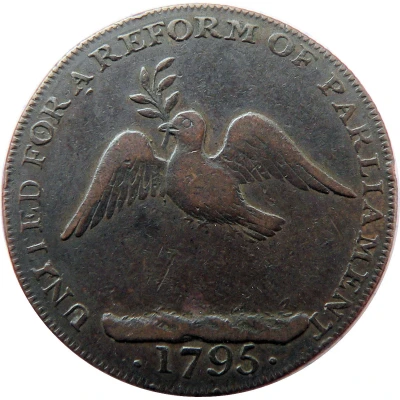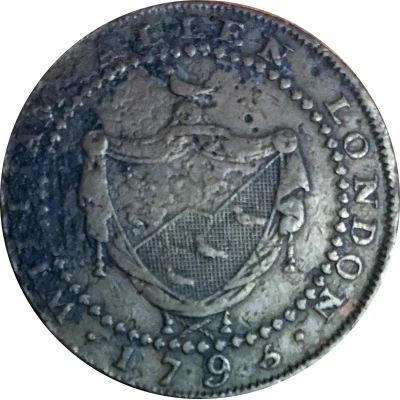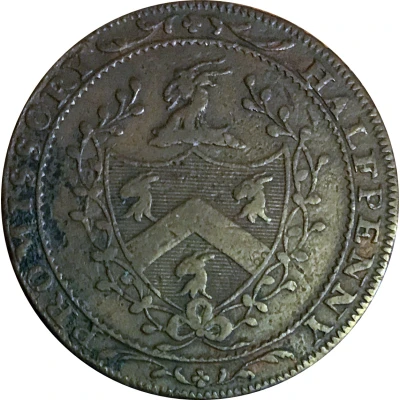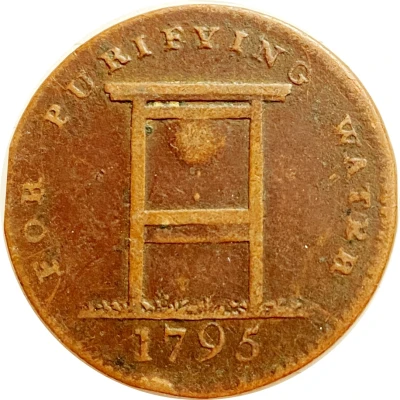


© ZacUK
½ Penny Middlesex - London / Corresponding Society
1795 year| Copper | - | 29 mm |
| Issuer | United Kingdom (United Kingdom, British Overseas Territories and Crown Dependencies) |
|---|---|
| Type | Token |
| Year | 1795 |
| Value | ½ Penny (1⁄480) |
| Currency | Conder tokens (1787-1797) |
| Composition | Copper |
| Diameter | 29 mm |
| Thickness | 1.2 mm |
| Shape | Round |
| Technique | Milled |
| Orientation | Coin alignment ↑↓ |
| Demonetized | 1797 |
| Updated | 2024-10-09 |
| Numista | N#108346 |
|---|---|
| Rarity index | 82% |
Reverse
A flying dove to left with an olive branch in its beak, legend around, date below.
Script: Latin
Lettering:
UNITED FOR A REFORM OF PARLIAMENT
• 1795 •
Edge
Diagonal milling \ \ \ \
Note: varieties exist (see below)
Comment
Corresponding Society London (Middlesex) copper Conder halfpenny token dated 1795.The London Corresponding Society was founded in 1792 in order to spread revolutionary doctrines, similar to those propagated in France following the Revolution, by pursuing political reform through education. It stressed the necessity of government by the people and highlighted the corrupt method of selection for Parliament, whilst advocating peace with France. It's greatest success was when 150,000 people attended one of their meetings in Copenhagen Fields, London in 1795.
The Society corresponded with other like-minded groups at home and abroad. The Corresponding Act of 1798 crushed all such radical societies.
Interesting fact
One interesting fact about the Token ½ Penny (Middlesex - London / Corresponding Society) 1795 from United Kingdom is that it was issued during a time of severe economic hardship and coinage shortages in the late 18th century. The coin was minted by a private organization, the Corresponding Society, to address the lack of small denomination coins in circulation. The Token ½ Penny was made of copper and had a unique design, featuring an image of a shield with the initials "G" and "R" on either side, surrounded by a wreath. Despite its issuance by a private organization, the coin was widely accepted and used as a means of payment, demonstrating the resourcefulness and resilience of the British people during a period of economic hardship.



